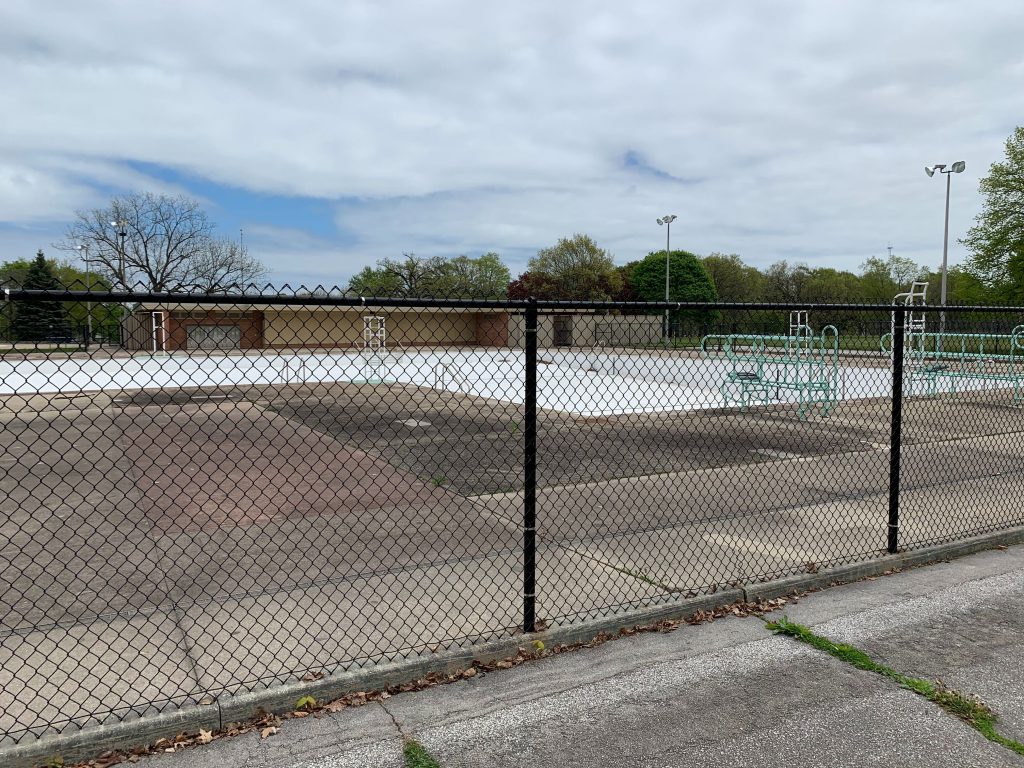Parks Face Huge Lifeguard Shortage
County down 83 guards from two years ago, must cut pool and beach hours. 'It's a tragedy.'
Milwaukee County is facing a severe lifeguard shortage for summer 2021.
Milwaukee, like the rest of the country, has experienced declining numbers of lifeguards in recent years. In 2019, the county had 135 lifeguards, then 80 guards in 2020 and now, as of mid-April, there are just 52 guards ready for the 2021 season.
The lifeguard shortage has a direct impact on safety at swimming facilities, which forces the parks department to reduce public swimming hours and close facilities. To safely operate the entire aquatics system, the department needs to hire approximately 210 lifeguards and 77 seasonal workers, according to an April report by the parks department.
“The Parks Department has for the last few years had to be creative and has strategically planned hours of operation for pools, staggered night hours across the aquatics facilities, and reduced hours based on attendance,” the report said.
With less than 60 guards in 2021, there is the potential for even more reduced hours and closures of public swimming facilities.
It’s unclear why there is a growing lifeguard shortage across the country. Supervisor Sheldon Wasserman said the steep drop in lifeguards between 2020 and 2021 in the county is likely due in part to the pandemic.
“Guarding is very traditional,” Wasserman explained. It’s a seasonal job that requires relatively extensive training compared to other jobs that are largely staffed by high school and college aged workers. When the pandemic shut down aquatic facilities many guards that may have gotten re-certified or moved up to senior or head guard positions sought other work, breaking the cycle.
“COVID disrupted this whole natural tradition of guards moving up,” Wasserman said, adding that it will be a difficult cycle to restart.
Wasserman noted that pool guards and beach guards are also not necessarily interchangeable, as beach guards have to deal with constantly changing weather and water conditions, and a much larger swim area, which makes the job more challenging and dangerous. In the April report, parks noted that, of the three returning head guards, zero have beach experience.
“We’re in trouble,” Wasserman said.
The parks department has been holding training sessions since January and will continue to hold them throughout May. The department increased the hourly pay for lifeguards compared to 2019, it paid for an advertising campaign and it has been doing “extensive outreach on social media and directly to swim teams and high schools,” Everett said.
Given the year-over-year decline of lifeguards, the solution to the problem is in the pipeline. This means teaching more children how to swim and making lifeguarding training more accessible.
The parks report said, “Various factors are contributing to this, including competition from summer internships, wages that are uncompetitive with other seasonal positions, national immigration policy limiting work visas, and a high barrier to entry due to training and swimming requirements.”
Lifeguarding and swimming proficiency are also racial equity issues, Wasserman said, explaining that the drowning rate for Black and Hispanic Children is much higher than for white children. A study published by the Centers for Disease Control and Prevention found that Black children aged 5 to 19 were 5 times as likely to die from drowning as white children. Another study by the University of Memphis found that more than half of Black and Hispanic or Latino children are considered “at-risk swimmers” while only 30% of white children are considered “at-risk swimmers.”
Lindsay Mondick, director of Innovative Priorities for the YMCA, wrote that institutional racism and harmful stereotypes have led to exclusion and limited participation in swimming lessons and water recreation, contributing to the disparities in swimming abilities and drowning rates between Black and white children.
“It’s a tragedy,” Wasserman said. “We’re a city by the lake, we talk about our freshwater resources. If a huge segment of our population can’t swim, what good is it to them?”
If you think stories like this are important, become a member of Urban Milwaukee and help support real, independent journalism. Plus you get some cool added benefits.




















What pay is offered by the county for seasonal lifeguard positions? Is it possible that if they raised the pay there’d be more demand for the jobs?
The pay range for this essential, life saving position is $12.69 – $14.74/hr. Details at:
https://milwaukeelearning.csod.com/ats/careersite/JobDetails.aspx?id=2068&site=6&source=IND
Milwaukee County’s/City of Milwaukee’s low wage economy is unjust and unsustainable. We have one of the most beautiful lakefronts in the country and for many Milwaukee area residents, it’s the only place they get to “go to the beach”. But not this year!
This is just another example of how park services have been diminished over the past many decades. Most will recall that a sales tax referendum was proposed in ’08 by the County Board. That referendum asked if citizens would support raising their taxes in order to permit our park & transit systems to be restored and enhanced. The public said “YES!” at the ballot box, but the same State Republican Party that continues to degrade our quality of life throughout Wisconsin refused to permit the public will to be realized.
The result of that referendum still stands, while our Park’s deferred maintenance deficit is now nearing one-half billion dollars according to the Wisconsin Policy Forum. Those who value our parks should consider thanking the Republicans appropriately next election.